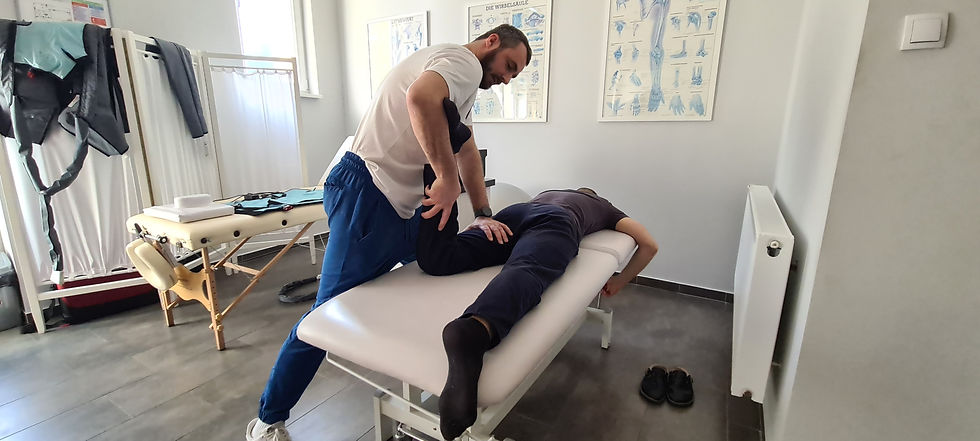
Kinesiotherapy - exercises
Kinesiotherapy (Greek words kinein - to move, kinesis - movement) is a field of physical therapy that deals with the application of movement for healing purposes, in order to establish optimal functioning of parts and the body as a whole. Kinesiotherapy as part of physical therapy is one of the most important aspects of medical rehabilitation.
It deals with the application of systematized movements of individual parts of the body or the whole body in the form of exercises to preserve, establish, develop and replace the functions of the locomotor system, as well as organs and systems that are functionally related to locomotion.
The goal of Kinesiotherapy is to maximize the full potential of the treated patient with an emphasis on the optimal possible recovery of impaired locomotor function.
Kinesiotherapy includes active and passive exercises.
Active exercises are divided into:
- active assisted
- active unsupported
- active resistance exercises
It is used in almost all medical specialties for numerous pathological conditions, but also preventively. There are practically no absolute contraindications, and they are relatively few.
Several anatomical structures participate in the performance of one movement:
- bone system
- joints
- muscles
- peripheral nervous system
- central nervous system
The therapeutic effects of Kinesiotherapy are:
- increase muscle strength and elasticity
- increase in the volume of mobility in the joints
- improving the function of the cardiovascular system, respiratory organs, nervous system and digestive organs
- improving circulation and accelerating local metabolism and the recovery process of the organism as a whole
- creating a proper pattern of movement and motor activity

Individual exercises

